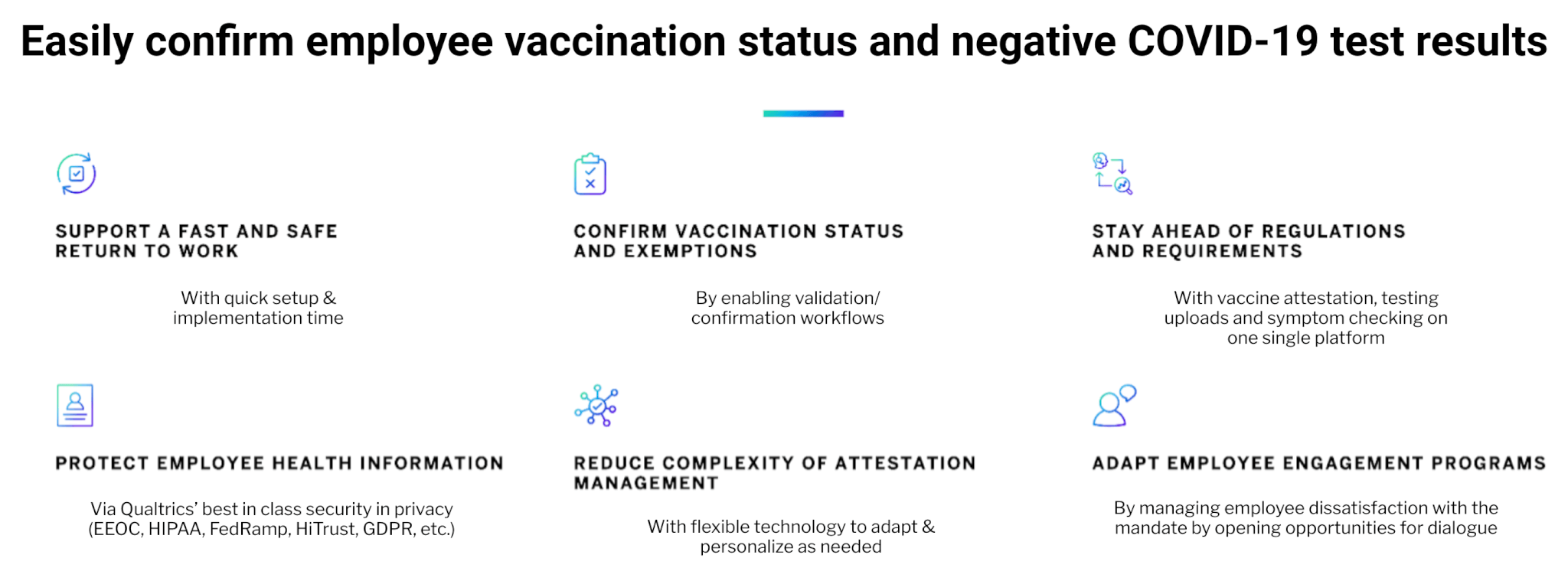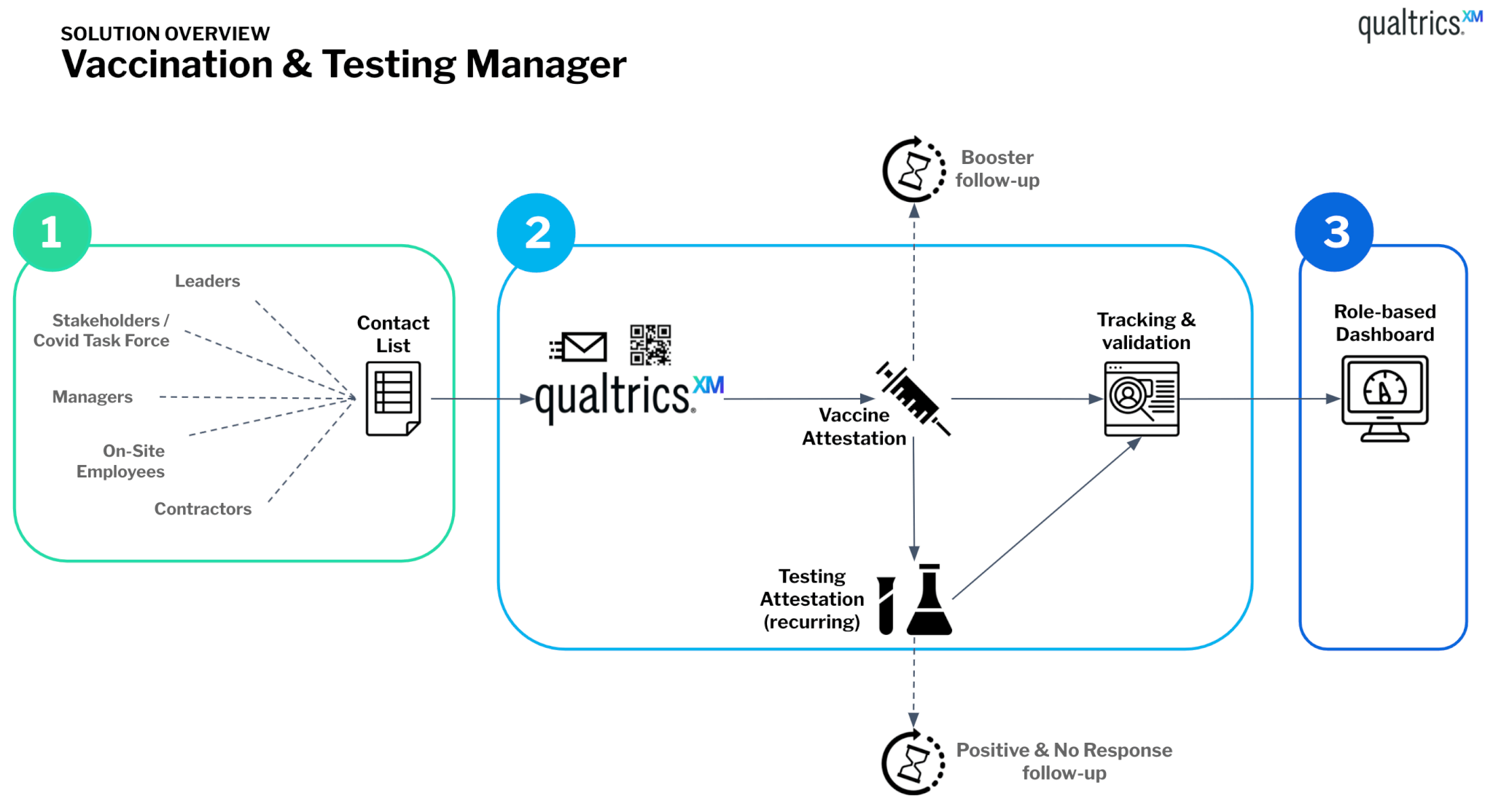Employee Experience
What employers need to know about the OSHA COVID vaccine mandate
OSHA has formally issued its COVID-19 vaccine and testing mandate. Here’s how organizations can comply while supporting the employee experience in the process.
The Occupational Safety and Health Administration (OSHA) – the regulatory agency of the United States Department of Labor that sets and enforces workplace standards to ensure the safe and healthful working conditions of American workers – has announced its published COVID-19 vaccine and testing mandate for U.S. businesses with 100 employees or more.
The vaccine mandate, while expected, has set in motion the need for millions of American workers to provide proof of vaccination. And the onus is on private employers – not only to comply with the emergency temporary standard but to support their employees through the compliance process.
We know from our research (more on that below) that many employees will be happy about the federal mandate – and happy to comply – but that won’t be the case for everyone.
Here’s how organizations can meet the new vaccine mandate, while also meeting the needs of their employees, as well.
What are the new vaccine mandate guidelines?
Back in September, the U.S. federal government announced that all U.S. businesses with 100 or more employees would be required to prove that their workers are either fully vaccinated or that unvaccinated employees are being tested weekly and are required to wear a mask at work.
Accommodations may be made for employees who declare medical or religious exemptions.
OSHA has now put that Executive Order into action with a new emergency temporary standard.
The Biden Administration has started the clock – and now it’s up to company leaders to quickly implement the new standards with as little disruption as possible.
Effective January 4, 2022, the OSHA rule:
- Applies to private businesses with 100 or more employees, certain health care workers and federal contractors.
- Allows for employees to remain unvaccinated, but the employee must provide a verified negative test to their employer on at least a weekly basis and must wear face masks in the workplace, starting December 5, 2021.
- Allows for the following exemptions 1) workers who are 100% remote, and 2) workers who perform their work exclusively outdoors 3) certain medical conditions, disabilities and religious affiliations that prevent vaccination
- Does not exempt healthcare workers; they must be 100% vaccinated.
- Penalizes companies for noncompliance; penalties can range from $13,653 per serious violation to $136,532 if a company willfully violates the rules.
“The time to watch and wait on vaccine mandates is over,” says Sydney Heimbrock, Chief Industry Advisory for Government at Qualtrics. “The Biden Administration has started the clock – and now it’s up to company leaders to quickly implement the new standards with as little disruption as possible.
“Since the initial announcement in September, employers were left with some degree of uncertainty as to what the new orders might mean for their workforce. With OSHA’s published standards, everyone now has the clarity they need to clearly communicate expectations and create processes that employees can easily understand and comply with. After almost two years of adjusting to this shape-shifting pandemic, employees deserve a swift response and a clear path forward.”
Do employees (and customers) support a vaccine mandate?
According to our research, two-thirds of employees (66%) say they would support their current employers if they require all workers to be vaccinated before returning to work in-person. In addition, almost half (45%) say they’d want to wait to be vaccinated before going back into the office, and about a quarter of employees (24%) say they would feel unsafe returning to work without a vaccine mandate.
Of course, there are two sides to this coin. Our research shows that almost 1 in 5 employees (19%) would strongly consider leaving their place of employment if their employers mandated vaccines. Fifty-seven percent of employees say they would feel safe going back to work, even if their employer doesn’t require vaccines.
Read more: New Research: A majority of employees support vaccine mandates for businesses and in the workplace
At the intersection of employee experience and customer experience are businesses that cater to on-site customers – and many are wondering whether vaccine mandates will be good for business.
Our research shows that 63% of people would support businesses at which they shop if they require their in-person employees to be vaccinated. In addition, 53% of people say they are more likely to shop at a business that requires their employees to be vaccinated.
How can organizations ensure a vaccine mandate doesn't negatively impact the employee experience?
Given that one-third of employees do not support employer vaccine mandates, and nearly 20% would strongly consider leaving their place of employment if their employers mandated vaccines, it’s critical for organizations to comply with the new COVID-19 vaccine mandate in a way that also supports the employee experience.
That first requires focusing on employee listening. Why? Vaccine mandates are polarizing. Thirty-one percent of employees do not think their company will actively enforce federal vaccine requirements, and 55% of employees would consider reporting a coworker for a violation. Listening to employees and building trust is more important than ever, and correlates directly with the success of any new vaccination status management system or policy.
Companies must lead with empathy in these times. With the OSHA standards now in place, companies must clearly communicate expectations and create processes with which employees can easily understand and comply. Employees deserve a swift response and a clear path forward, given all the uncertainty they have endured the last 18 months.
Nowadays, employees also expect a seamless digital experience – and that includes the technology they would use to show proof of vaccination or a negative test result. As such, you want to make it easy for your employees to comply by choosing a solution that is simple to use and access on any device.
What steps can organizations take to implement vaccine mandate guidelines?
Given the mutual importance of complying with the vaccine and testing mandate, as well as supporting your employees through this time of change, you want to develop a robust COVID-19 policy and process that enables your people to quickly and easily confirm their vaccination status.
Here are four steps to take to get started:
Step 1: Communicate with and educate your employees about the vaccine mandate
Ensuring employees are informed about the mandate – and your new vaccination verification policies and potential solutions – will help to establish buy-in and reduce friction throughout.
It isn’t just about providing resources to help educate, but also about giving them the opportunity to ask questions, provide feedback, and be involved.
Transparency is key and ultimately leads to better outcomes and understanding.
With OSHA’s published standards, everyone now has the clarity they need to clearly communicate expectations and create processes that employees can easily understand and comply with.
Step 2: Leverage the right solution
Here’s where we can help: Qualtrics has a solution many organizations are using to enable you to remain compliant with mandates while supporting employee well-being and empowering your people to be a part of the conversation.
The Qualtrics Vaccination & Testing Manager enables you to confirm employees’ vaccination status, ongoing test results, and screen for COVID-19 symptoms – all in one single platform.

You can get started in weeks, not months, and you have the flexibility to adapt to future workplace safety requirements and changing regulations.
Employees can easily and confidentially confirm their COVID-19 vaccination status – all they need to do is upload their vaccination cards, digital certificate(s), or exemptions via your preferred digital channels (email, text, or webpage).

And as a solution with minimal administrative overhead and automated workflows, it’s easy to guide employees through the process – meaning less work for HR leaders.
Step 3: Keep a pulse on employee sentiment
A vaccination requirement can create new stressors at work. This moment is both a challenge and an opportunity for businesses to shift their organizational cultures towards greater empathy and mutual understanding about how to protect workers.
By building a culture of listening into vaccination requirement compliance and using the appropriate tools and solutions, such as an employee pulse survey, it becomes much easier to glean insights that can help you encourage employees to participate, better communicate about vaccine requirements, and continue the conversation about the OSHA vaccine mandate.
Learn more about employee pulse surveys in this comprehensive guide.
Step 4: Stay nimble and ready for change
If the COVID-19 pandemic has taught us anything, it’s that changes happen fast and often unexpectedly.
Over the next few years, it’s highly likely that vaccination requirements, mandates, and even certifications will change – especially if the virus continues to evolve. Occupational safety – and protecting workers – will remain a critical business need.
As decisions change regarding required immunization practices and mitigation methods, having a flexible solution with plug-and-play capability can help organizations and governments to respond at the speed required to keep pace with these changes.
Learn from the experts about how to build a vaccination and testing management program in days
